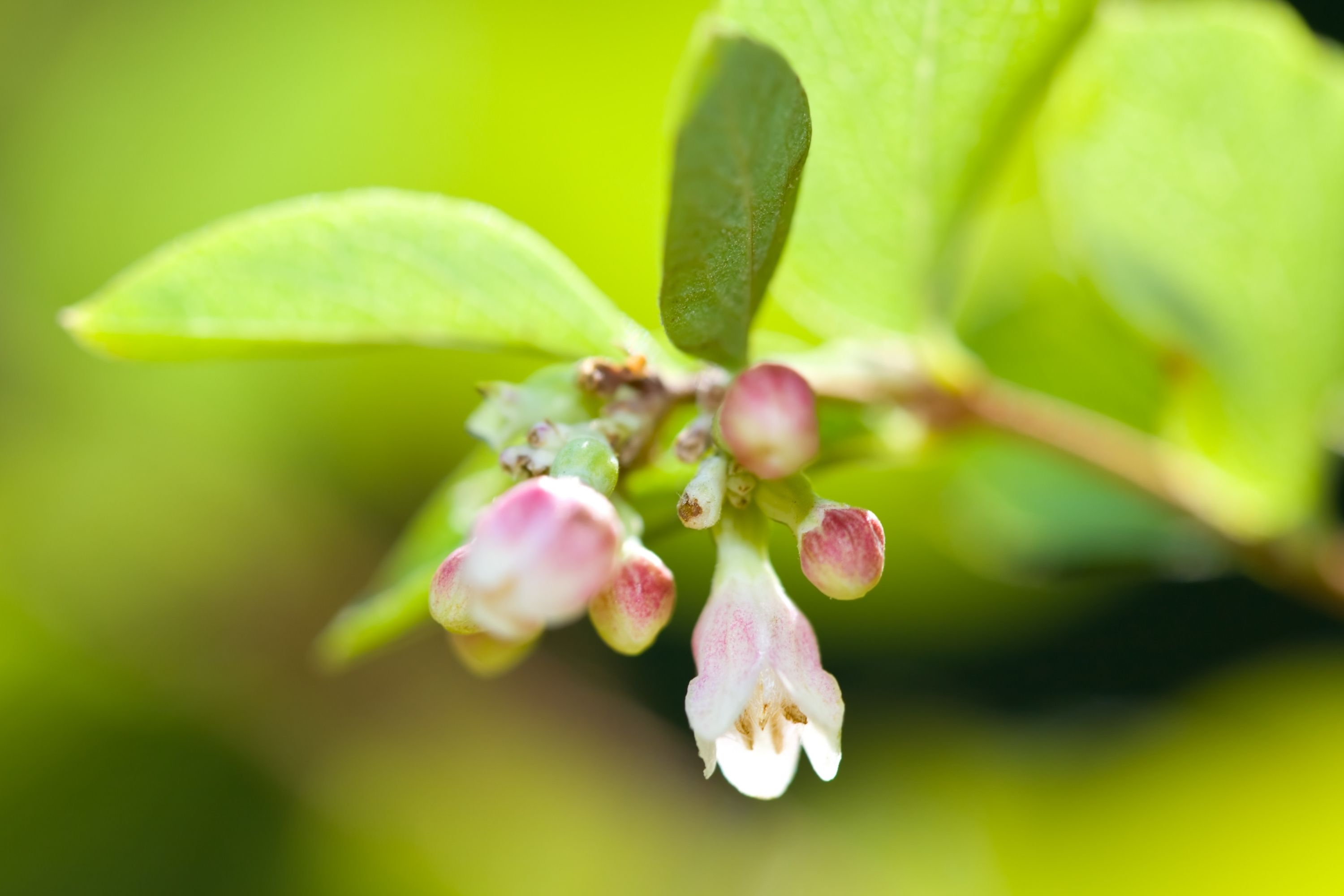Creeping snowberry
(Symphoricarpos mollis)

Description
Symphoricarpos mollis, with the common names creeping snowberry, Southern California snowberry, and trip vine, is a shrub in the Honeysuckle Family (Caprifoliaceae). It is found in western North America from British Columbia to California inland to Nevada and Idaho. The shrub does well in warm climates and can tolerate both intense sun and constant shade. It is a plant of chaparral ecosystems, especially along coastlines. The plant is a creeping shrub, low growing and straggling, with stems that can reach several feet while the height limited to only about 1 1/2 ft. It reproduces both from via rhizome and seed. Leaves are opposite. Stems are flexible. It bears bunches of red or pink rounded, bell-shaped flowers and spherical or bulbous white or pink-tinted fruits. The fruits are not generally considered toxic but are distasteful, having a soapy texture due to the presence of saponins. Symphoricarpos, commonly known as the snowberry, waxberry, or ghostberry, is a small genus of about 15 species of deciduous shrubs in the honeysuckle family, Caprifoliaceae. With the exception of the Chinese coralberry, S. sinensis, which is indigenous to western China, all species are native to North and Central America. The name of the genus is derived from the Ancient Greek words συμφορεῖν (sumphoreîn), meaning "to bear together", and (karpós), meaning "fruit". It refers to the closely packed clusters of berries the species produces. Snowberry is a resilient plant able to withstand a variety of conditions. Snowberry plants are most commonly found in forests, dry or moist openings, rocky hillsides or near riverbanks and streams. They have been known to grow in a variety of soil types such as light sandy soil, medium loamy soil and heavier clay soil. Snowberry plants are also able to grow in a wide range of acidic and basic pHs and sunlight conditions. Symphoricarpos leaves are 1.5–5 cm (0.59–1.97 in) long, rounded, entire or with one or two lobes at the base. The flowers are small, greenish-white to pink, in small clusters of 5–15 together in most species, solitary or in pairs in some (e.g. S. microphyllus). The fruit is conspicuous, 1–2 cm (0.5–1 in) in diameter, soft, varying from white (e.g. S. albus) to pink (S. microphyllus) to red (S. orbiculatus) and in one species (S. sinensis), blackish purple.
Taxonomic tree:







